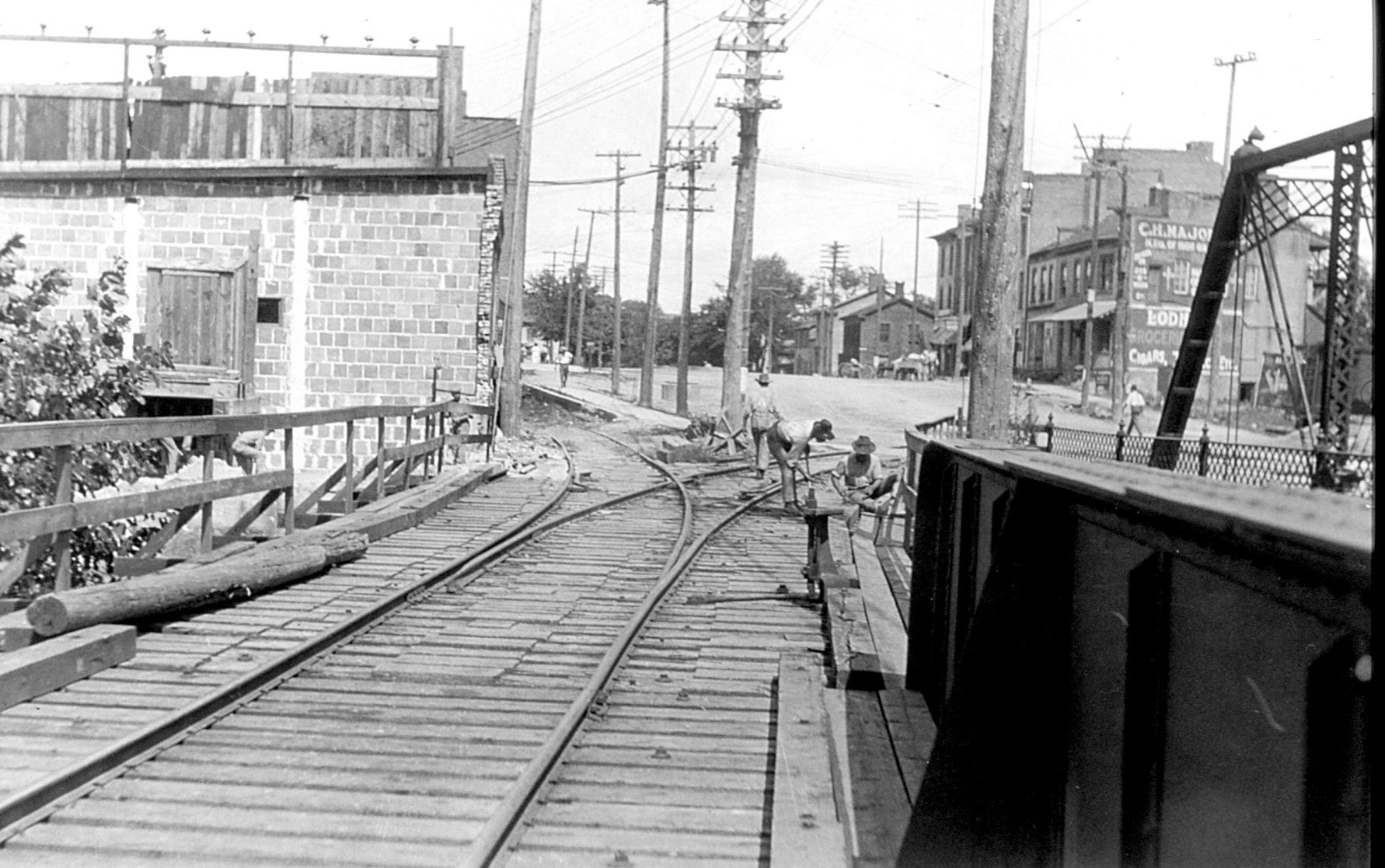<h2>Lower Town's Flour Mills</h2>
On the site in front of you in 1860, William Sinclair built the flour mill shown above in the birdseye on right. Lower Town founder Anson Brown had erected the first mill here in 1833. Brown dammed the Huron River up-stream to create a millpond and raise the level of the water, which flowed down a millrace high above the river's north bank. This provided power for the flour mill, a woolen mill, a paper mill, and other Lower Town industries.
<br><br>
Hydro power uses the energy of flowing water to do work. Water falling from a headrace creates enough force to turn the blades of the water wheels in the mill, before flowing out a tailrace to the river below. Main drive shafts transfer power from water wheels to a series of gears, shafts, pulleys, and belts that operate millstones, sifters, grist elevators,grain cleaners, and other equipment.
<br><br>
Sinclair’s earlier mill on this site was reported to have ground 800 barrels of flour weekly. Following the 1841 harvest, it shipped a record 8,112 barrels to New York via the Erie Canal. Under subsequent owners, the mill retained Sinclair’s name. In 1894 the Ann Arbor Milling Company renamed it <a href="/gallery/aastreets/site10a/">Argo Mills</a>.
<br><br>
Argo shared the fate of earlier mills and was <a href="http://aastreets.aadl.org/node/5143">consumed by fire in 1904</a>. The owners built a <a href="http://bentley.umich.edu/">small hydroelectric powerhouse</a> on the site and sold it to Edison in 1905. A railroad spur had serviced the mill as well as the Agricultural Works across Broadway. Edison built their new power station here in 1914.
<br><br>
Sponsored by DTE Energy
<br><br>
Photos Courtesy of Bentley Historical Library
<br><br>
These images may be protected by copyright law. Contact the Bentley Historical Library for permission to reproduce, display or transmit these images. Repository: <a href="http://bentley.umich.edu/">Bentley Historical Library</a>
Argo consumed by fire in 1904

Year:
1904
- Read more about Argo consumed by fire in 1904
- Log in or register to post comments
hydroelectric powerhouse, 1905

Year:
1905
- Read more about hydroelectric powerhouse, 1905
- Log in or register to post comments
1866 birdseye view of flour mill

Year:
1866
- Read more about 1866 birdseye view of flour mill
- Log in or register to post comments
Ann Arbor Milling Co.

- Read more about Ann Arbor Milling Co.
- Log in or register to post comments